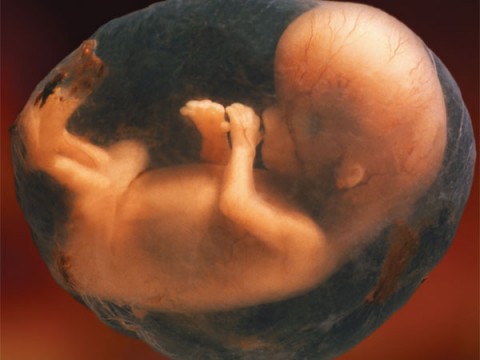Passing the First Trimester into the Second
Once you’ve passed the important first trimester milestone, you can relax and really begin to enjoy your pregnancy. Morning sickness has usually passed by this time and your baby is developing quickly. During the second trimester you’ll begin to notice a baby bump as your baby grows, and you may notice other changes like regaining your lost energy and your breasts may grow larger. While there are many changes taking place to your own body, your baby is changing even more quickly. The following is how your baby is developing during the second trimester.

The Fourth Month
By the beginning of your second trimester, your baby will have fingers and toes that are well defined. Their eyelids, eyelashes and eyebrows will be distinct, as will their finger and toenails, and their hair may have started to grow. Their teeth (still below the gums) and bones will gain density. Your baby may yawn, suck her thumb and even stretch. They may also begin to make various facial expressions.
Most women have an ultrasound by the fourth month, and the baby’s genitals are fully developed and the technician may be able to determine the baby’s gender. Your health care provider should be able to detect a heartbeat, and the baby’s organs are fully developed. By the end of the fourth month, the baby is about four ounces in weight and about six inches long.
The Fifth Month
The hair on your babies head will be getting longer, and they will develop lanugo, which is the soft hair that covers her shoulders and back. This hair protects your baby and they typically shed it soon after birth. By this time, your baby’s skin will be covered with vernix caseosa. This is a thin layer of a white substance that is believed to protect the baby’s delicate skin from exposure to the amniotic fluid. Most excitingly, in the fifth month you may begin to feel the baby moving. The baby will move to exercise their developing muscles. By the end of this fifth month the baby is about 10 inches long and can weigh up to one pound.
The Sixth Month
By the sixth month your baby has developed all the parts and organs that they need, and they can typically survive in a neonatal unit if born premature anytime beyond 23 weeks. From here forward, the baby is growing in size and weight and getting ready to survive outside the womb. During the sixth month, your baby can weigh up to two pounds, and their skin appears reddish and wrinkly. Their skin is translucent, and veins are visible through it. At some point during this month, they will open their eyes. During the sixth month you may notice that your baby responds to your voice or music by moving, and you may feel them hiccup.